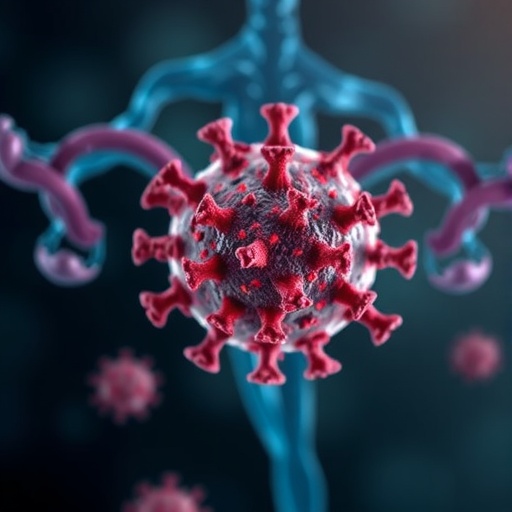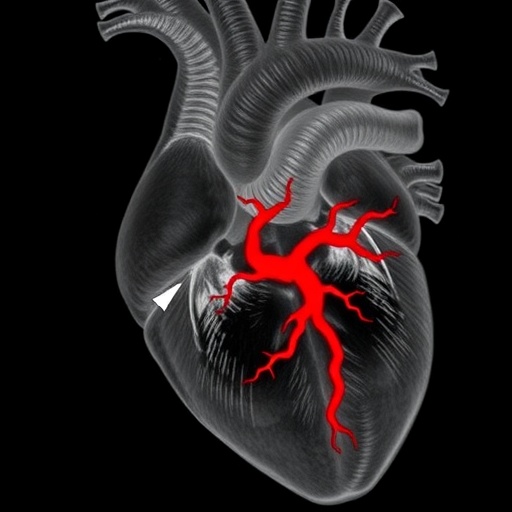The COVID-19 pandemic has fundamentally altered many aspects of daily life across the globe, from social interactions to health care systems. One of the less discussed, yet critically impactful, consequences of this unprecedented health crisis is its effect on women’s reproductive health, particularly among those experiencing pathological ovarian aging. A recent study titled “Influence of COVID-19 on endocrine and metabolic profiles in women with pathological ovarian aging,” authored by Jiang, Zhang, and Meng, delves deeply into this important topic and offers compelling insights into the complex interplay between viral infection and reproductive endocrine functions.
The study was undertaken against the backdrop of growing evidence linking viral infections to disruptions in hormonal balance. Women suffering from pathological ovarian aging—characterized by diminished ovarian function often leading to infertility—may face even more significant challenges when exposed to the SARS-CoV-2 virus. The investigators sought to elucidate how COVID-19 influences not just the endocrine profiles but also the broader metabolic implications for this vulnerable population. The research is timely and addresses a critical gap in understanding how viral pathogens can affect reproductive health.
Using a robust cohort of participants, the researchers conducted a comparative analysis of hormonal levels and metabolic markers in women diagnosed with pathological ovarian aging before and after confirmed COVID-19 infections. This approach allowed for real-time assessment of changes in the endocrine system and provided an opportunity to observe fluctuations in metabolic indicators, highlighting the potentially devastating effects of such a viral infection on reproductive health.
One of the primary findings of the study was that infection with COVID-19 was associated with significant alterations in hormone levels. For instance, hormones critical to ovarian function, such as estrogen and progesterone, showed marked deviations from baseline measurements after infection. This raises concerns not only about fertility but also about the broader implications for a woman’s overall health, given the key roles these hormones play in various bodily systems, including bone density, cardiovascular health, and mental well-being.
Moreover, the study revealed that the metabolic profile of affected women was equally disrupted by the COVID-19 infection. The researchers documented increases in insulin resistance, which can lead to a predisposition toward metabolic syndrome—a collection of conditions that heighten the risk of heart disease and diabetes. This was particularly alarming as it suggested a dual burden: not only were these women coping with potential fertility issues, but the long-term health implications stemming from metabolic disruptions could pose serious risks.
The statistical analysis provided in the study further bolsters these findings, showcasing an alarming trend in how viral infections can trigger cascading effects on endocrine and metabolic health. As the data indicates, the more severe the COVID-19 infection, the greater the disruptions observed in ovarian function and metabolic health markers. This correlation calls for a reevaluation of the clinical approaches to managing reproductive health in women, especially those presenting with coexisting conditions like reproductive aging.
One of the standout aspects of the research is its emphasis on the necessity of long-term studies to monitor the enduring impacts of COVID-19 on women’s reproductive health. The authors advocate for continuous surveillance and support for women diagnosed with pathological ovarian aging post-infection. This calls for a proactive stance within the healthcare community to ensure that this demographic receives appropriate care tailored to their evolving health needs.
Furthermore, the study sheds light on the potential implications for fertility treatments in women who have contracted COVID-19. Evidence suggests that hormonal imbalances resulting from the virus may complicate traditional fertility protocols. As a result, the findings demand that healthcare providers meticulously assess the impact of COVID-19 when considering treatment options for affected women, merging reproductive endocrinology with infectious disease expertise.
While the research sheds light on grave concerns, it also opens the door to potential interventions aimed at mitigating these negative outcomes. For instance, lifestyle modifications tailored to improve metabolic health—such as specialized diets, physical activity regimens, and psychological support—could be emphasized within treatment plans. By focusing on holistic health, women’s healthcare providers can adopt more comprehensive strategies to address both reproductive and metabolic health challenges.
Importantly, the findings raise ethical considerations around inform disease monitoring and treatment priorities. With the overwhelming focus on COVID-19 and its direct consequences on public health, reproductive health issues may have been relegated to a lesser priority. As such, studies like this emphasize the importance of maintaining a broad focus on all aspects of health, leading to better outcomes for women who may be sidelined in clinical discussions.
The implications of these revelations extend beyond individual cases, influencing public health policy and research direction. As healthcare systems strive to recover from the pandemic’s challenges, the integration of reproductive health concerns must be prioritized, particularly for vulnerable populations like those with pathological ovarian aging. Policymakers and clinicians alike are urged to give reproductive health the attention it deserves, ensuring that comprehensive care frameworks are established to handle the fallout from viral infections like COVID-19.
The researchers conclude their study with a call for increased awareness and education regarding the potential impacts of COVID-19 on women’s health. By arming both practitioners and patients with knowledge, proactive measures can be implemented to address the nuanced health challenges that may arise in the aftermath of viral infections. This research serves as not just a report on hormonal and metabolic shifts, but as a clarion call for action—reminding us that combating viral infections requires a holistic view on health, focusing on all its interconnected facets.
In summary, the COVID-19 pandemic has highlighted critical gaps in our understanding of women’s reproductive health. The groundbreaking study by Jiang et al. illustrates how a global health crisis can reverberate through hormonal and metabolic systems in women with pathological ovarian aging. As this research continues to garner attention, it is imperative that healthcare providers and policymakers take heed, working toward comprehensive strategies that address the full spectrum of health needs for women in this vulnerable population while fostering further studies in this nascent but essential area of inquiry.
Subject of Research: The impact of COVID-19 on endocrine and metabolic profiles in women with pathological ovarian aging.
Article Title: Influence of COVID-19 on endocrine and metabolic profiles in women with pathological ovarian aging.
Article References:
Jiang, H., Zhang, R., Meng, S. et al. Influence of COVID-19 on endocrine and metabolic profiles in women with pathological ovarian aging.
J Ovarian Res 18, 259 (2025). https://doi.org/10.1186/s13048-025-01854-5
Image Credits: AI Generated
DOI: https://doi.org/10.1186/s13048-025-01854-5
Keywords: COVID-19, women’s health, reproductive health, ovarian aging, endocrine profiles, metabolic profiles, hormonal imbalances, fertility, viral infections.
Tags: COVID-19 impact on reproductive healthendocrine profiles and COVID-19health care systems during pandemichormonal balance and viral infectionsinfertility and COVID-19 effectsmetabolic implications of COVID-19pathological ovarian aging challengesreproductive health and viral infectionsstudy on COVID-19 and reproductive endocrine functionsviral pathogens and women’s healthwomen’s health research during COVID-19women’s ovarian aging profiles





